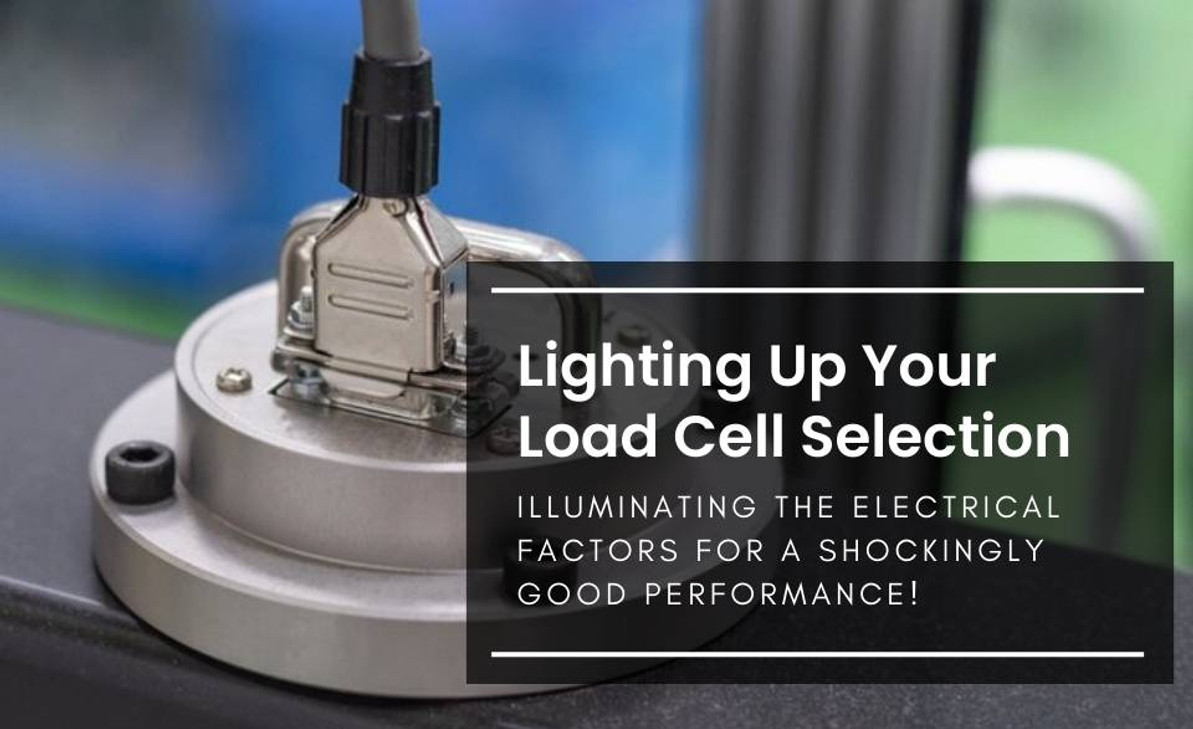Lighting Up Your Load Cell Selection: Illuminating the Electrical Factors for a Shockingly Good Performance!
In an ever-evolving world of technology and innovation, the selection of the right load cell has become a critical aspect of various industries. With an array of load cells available, ranging from hydraulic to pneumatic, piezoelectric to capacitive, making an informed decision is paramount. This research endeavor aims to shed light on the intricate factors involved in choosing the perfect load cell, focusing specifically on the electrical aspects. By unraveling the complexities of excitation voltage, output signals, noise immunity, and more, this study serves as a comprehensive guide to empower engineers, researchers, and industry professionals in their quest for optimal performance and precise measurements. Prepare to delve into the electrifying world of load cells, where electrical factors take center stage in shaping the foundation of reliable and accurate load-sensing technology.
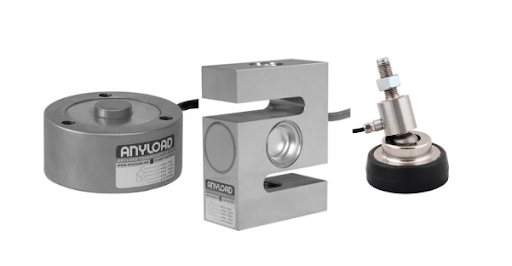
Fig 1. Different Types of Tacuna Systems Load Cells
What are the 20 factors to choose the right load cell?
- Load Capacity: Load capacity refers to the range of loads a load cell can measure accurately. It is essential to select a load cell with a capacity that can handle the anticipated maximum and minimum loads in your application. Choosing a load cell with a capacity too close to your maximum load may lead to inaccurate measurements or damage to the load cell.
- Accuracy: Accuracy is a measure of how closely the load cell's output reflects the actual applied load. It is typically expressed as a percentage of the full-scale output. Higher accuracy ensures more precise measurements. For critical applications, such as laboratory testing or research, higher accuracy is desirable.
- Sensitivity: Sensitivity indicates the load cell's ability to detect small changes in load. It is usually specified as the change in output per unit change in load. A more sensitive load cell can provide more precise measurements, making it suitable for applications requiring high resolution and the detection of small force variations.
- Linearity: Linearity refers to how well the load cell's output follows a straight line in response to applied load across its entire range. A load cell with good linearity will exhibit minimal deviations or non-linearities. It ensures that the load cell provides accurate measurements regardless of the applied load.
- Overload Capacity: Overload capacity describes the load cell's ability to withstand occasional or accidental overloads without damaging its performance. It is important to choose a load cell with an overload capacity higher than the anticipated maximum load in your application to ensure its longevity and reliability.
- Environmental Conditions: Consider the operating environment in which the load cell will be used. Factors such as temperature, humidity, dust, and corrosive substances can affect the load cell's performance. Ensure that the load cell has appropriate protection ratings, such as an IP (Ingress Protection) rating, to withstand these conditions. This ensures that the load cell operates reliably and accurately in its intended environment.
- Size and Mounting: The physical size and mounting options of the load cell are crucial considerations. Ensure that the load cell's dimensions and mounting configuration are compatible with the available space and installation requirements in your application. It should be securely mounted to provide accurate measurements.
- Construction Material: Load cells are typically constructed from materials such as stainless steel, aluminum, or alloy. The choice of material depends on factors such as environmental conditions, load requirements, and the presence of corrosive substances. Stainless steel offers good resistance to corrosion, making it suitable for harsh environments, while aluminum load cells are lighter and cost-effective for less demanding applications.
- Fatigue Life: Fatigue life refers to the load cell's ability to withstand repeated loading cycles without any degradation in performance. If your application involves cyclic loading or long-term use, choosing a load cell with a high fatigue life ensures its durability and reliability over time.
- Signal Output: Load cells can provide analog or digital output signals. Analog output is typically in the form of voltage or current, while digital output can include interfaces like USB, RS-232, or Ethernet. Choose the signal output type that is compatible with your measurement system or data acquisition equipment.
- Calibration: Load cells require periodic calibration to maintain accurate measurements. Consider the ease of calibration and the load cell's long-term stability. Some load cells may have built-in calibration features or offer calibration services, simplifying the calibration process.
- Physical Protection: Assess the load cell's ability to withstand mechanical shock, vibration, and external impacts that could affect its performance. If your application involves rugged environments or heavy machinery, choose a load cell with robust physical protection to ensure its longevity and accuracy.
- Compatibility: Ensure that the load cell is compatible with your measurement system, instrumentation, or data acquisition equipment. Check the load cell's specifications for compatibility with voltage levels, signal conditioning requirements, or communication protocols to ensure seamless integration.
- Power Requirements: Consider the power supply requirements of the load cell. Some load cells are passive and do not require a power supply, while others may need an external power source. Ensure that the available power sources align with the load cell's requirements.
- Cost: Cost is an important factor to consider based on your budget and application requirements. Higher accuracy, specialized features, or robust construction may increase the cost of the load cell. Evaluate the cost of the desired performance and reliability for your specific application.
- Installation and Maintenance: Consider the ease of installation and ongoing maintenance requirements of the load cell. Some load cells may require specific mounting techniques or additional accessories for proper installation. Assess the maintenance needs, such as cleaning or periodic calibration, to ensure the load cell can be properly maintained within your operational capabilities.
- Certifications: Depending on your industry or application, certain load cell certifications or compliance with specific standards may be required. Examples include ISO, NTEP, OIML, or ATEX certifications. Ensure that the load cell meets any specific industry standards or certifications necessary for your application.
- Response Time: Response time refers to the load cell's ability to settle and provide a stable output after a load is applied. Applications that require rapid load changes may benefit from load cells with faster response times. Consider the required response time based on the dynamics of your application.
- Noise Immunity: Load cells may be susceptible to electrical noise or interference from nearby equipment. Look for load cells with good noise immunity features, such as shielding or filtering, to minimize the impact of external electrical noise and ensure accurate measurements.
- Manufacturer Reputation and Support: Consider the reputation and support provided by the load cell manufacturer. Evaluate their track record, customer reviews, and after-sales support. A reputable manufacturer will offer warranties, technical assistance, and readily available spare parts, ensuring a smooth experience throughout the lifespan of the load cell.
By carefully considering these factors, you can select the most suitable load cell for your specific application, ensuring accurate and reliable force measurements.
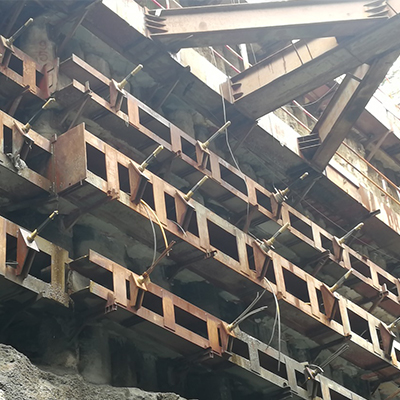
Fig 2. Anchor Load cell in the diaphragm wall at an under-construction metro station
Which factor is the most important that should be considered first while choosing?
The most important factor to consider first when choosing a load cell depends on your specific application requirements. However, the load capacity is generally a critical factor to prioritize. Here's why:
Load capacity: Determining the load capacity requirement is crucial because it ensures that the load cell can handle the anticipated range of loads in your application. If the load capacity of the chosen load cell is not suitable for your application, it can lead to inaccurate measurements, damage to the load cell, or even safety risks.
By identifying the maximum and minimum loads your application requires, you can narrow down your options and focus on load cells that have the appropriate capacity range. Once you have a shortlist of load cells that meet your load capacity requirements, you can then consider other factors like accuracy, sensitivity, environmental conditions, and others to make a more informed decision.
Keep in mind that while load capacity is an essential factor, it should be evaluated in conjunction with other factors to ensure that you choose a load cell that meets all your specific needs for accuracy, reliability, durability, and compatibility with your application.
How can choose the right strain gauge type?
Choosing the right strain gauge type depends on various factors related to your specific application requirements. Here are some considerations to help you select the appropriate strain gauge type:
- Measurement Principle: Understand the measurement principle required for your application. Strain gauges can be categorized into electrical resistance, semiconductor, and optical types. Electrical resistance strain gauges are the most common and widely used.
- Gauge Factor: The gauge factor is a crucial parameter that determines the sensitivity of a strain gauge. It indicates the change in electrical resistance per unit strain. Different materials and designs have varying gauge factors. Select a strain gauge with a suitable gauge factor that aligns with your desired sensitivity and measurement range.
- Strain Range: Determine the anticipated strain range in your application. Different strain gauge types have specific strain limits. Ensure that the chosen strain gauge can accommodate the expected strain levels without exceeding its linear range or causing failure.
- Temperature Considerations: Strain gauges can be affected by temperature variations, leading to thermal expansion/contraction mismatch. Consider the temperature range in your application and choose a strain gauge with appropriate thermal characteristics, such as thermal expansion coefficients and stability, to minimize temperature-related measurement errors.
- Environmental Conditions: Assess the environmental conditions in which the strain gauge will be installed. Factors such as humidity, corrosive substances, or extreme temperatures can impact the strain gauge's performance and durability. Choose a strain gauge with suitable protective coatings or materials to ensure reliability in specific environmental conditions.
- Material Compatibility: Consider the compatibility of the strain gauge material with the specimen or structure being measured. Different strain gauges materials, such as metallic foils or semiconductor materials, may be better suited for specific applications or materials like metals, composites, or concrete.
- Mounting Considerations: Evaluate the mounting method required for your application. Strain gauges can be surface-mounted, bonded, or embedded within the material. Choose a strain gauge that can be easily and securely mounted on the specimen or structure, ensuring proper strain transmission.
- Electrical Compatibility: Ensure that the strain gauge's electrical properties, such as resistance and impedance, are compatible with your measurement system or data acquisition equipment. Consider the required bridge configuration (quarter bridge, half-bridge, or full bridge) and impedance matching for accurate measurements.
- Application Expertise: Seek guidance from strain gauge manufacturers, suppliers, or experts who can provide specific recommendations based on your application requirements. They can assist in selecting the appropriate strain gauge type and provide technical support throughout the installation and measurement process.
By considering these factors, you can make an informed decision while choosing the right strain gauge type that meets your application's needs for accuracy, sensitivity, temperature stability, and environmental compatibility.
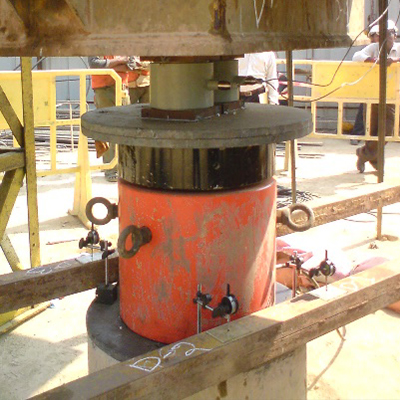
Fig 3. Compression load cell used in pile testings
What is the factor to choose the right hydraulic load cell?
When selecting the right hydraulic load cell, several factors should be considered to ensure it meets the requirements of your application. Here are the key factors to consider:
- Load Capacity: Determine the maximum and minimum loads your application requires to ensure the hydraulic load cell can handle the anticipated range. Choose a load cell with a capacity that aligns with your specific load requirements.
- Accuracy: Consider the level of accuracy needed for your application. Hydraulic load cells can offer high accuracy, but it's important to choose one that provides the required precision for your measurements.
- Sensitivity: Evaluate the sensitivity of the hydraulic load cell, which refers to its ability to detect small changes in load. Higher sensitivity allows for more precise measurements.
- Operating Pressure: Consider the range of operating pressures in your application. Hydraulic load cells typically have specific pressure limits. Ensure that the selected load cell can withstand and operate within the expected pressure range.
- Temperature Range: Evaluate the temperature range in which the hydraulic load cell will operate. Consider both the ambient temperature and the temperature of the measured load. Ensure that the load cell is compatible with the anticipated temperature extremes to maintain accurate measurements.
- Construction Material: Hydraulic load cells are typically made of robust materials such as stainless steel or alloy steel to withstand high-pressure environments. Choose a load cell with a suitable construction material that is compatible with the application's environmental conditions and load requirements.
- Environmental Conditions: Consider the operating environment in which the hydraulic load cell will be used. Factors such as temperature, humidity, dust, and corrosive substances can impact the load cell's performance. Ensure that the load cell has appropriate protection ratings (e.g., IP67) and corrosion resistance to withstand these conditions.
- Overload Protection: Assess the hydraulic load cell's ability to handle occasional or accidental overloads without damaging its performance. Look for load cells with built-in overload protection features to ensure the longevity and reliability of the load cell.
- Mounting and Installation: Evaluate the mounting options and installation requirements of the hydraulic load cell. Consider the available space and the load cell's compatibility with your application's mounting configuration.
- Output Signal: Determine the type of output signal required from the hydraulic load cell. Common output options include analog voltage, current, or digital signals such as RS-485 or CANbus. Ensure the load cell's output is compatible with your measurement system or data acquisition equipment.
- Calibration and Maintenance: Consider the ease of calibration and ongoing maintenance requirements of the hydraulic load cell. Evaluate the load cell's stability over time and the availability of calibration services or support from the manufacturer.
- Manufacturer Reputation and Support: Consider the reputation and support provided by the hydraulic load cell manufacturer. Assess their track record, customer reviews, warranties, technical assistance, and availability of spare parts. A reputable manufacturer ensures quality products and reliable customer support.
By considering these factors, you can select the right hydraulic load cell that meets the load capacity, accuracy, environmental, and operational requirements of your application.
Important factors to choose the right Pneumatic load cell
When selecting the right pneumatic load cell, several important factors should be considered to ensure it meets the requirements of your application. Here are the key factors to consider:
- Load Capacity: Determine the maximum and minimum loads your application requires to ensure the pneumatic load cell can handle the anticipated range. Choose a load cell with a capacity that aligns with your specific load requirements.
- Accuracy: Consider the level of accuracy needed for your application. Pneumatic load cells can provide high accuracy, but it's important to choose one that offers the required precision for your measurements.
- Sensitivity: Evaluate the sensitivity of the pneumatic load cell, which refers to its ability to detect small changes in load. Higher sensitivity allows for more precise measurements.
- Operating Pressure: Consider the range of operating pressures in your application. Pneumatic load cells operate based on air pressure, and it's important to choose a load cell that can withstand and operate within the expected pressure range.
- Construction Material: Pneumatic load cells are typically made of materials such as stainless steel or aluminum for their durability and corrosion resistance. Choose a load cell with a suitable construction material that is compatible with the application's environmental conditions and load requirements.
- Environmental Conditions: Consider the operating environment in which the pneumatic load cell will be used. Factors such as temperature, humidity, dust, and corrosive substances can impact the load cell's performance. Ensure that the load cell has appropriate protection ratings (e.g., IP67) and corrosion resistance to withstand these conditions.
- Overload Protection: Assess the pneumatic load cell's ability to handle occasional or accidental overloads without damaging its performance. Look for load cells with built-in overload protection features to ensure the longevity and reliability of the load cell.
- Response Time: Consider the required response time for your application. Pneumatic load cells may have different response times based on their design and construction. Choose a load cell that can meet the dynamics and speed requirements of your application.
- Mounting and Installation: Evaluate the mounting options and installation requirements of the pneumatic load cell. Consider the available space and the load cell's compatibility with your application's mounting configuration.
- Output Signal: Determine the type of output signal required from the pneumatic load cell. Common output options include pneumatic pressure signals or converting the pressure signal to an electrical output. Ensure the load cell's output is compatible with your measurement system or data acquisition equipment.
- Calibration and Maintenance: Consider the ease of calibration and ongoing maintenance requirements of the pneumatic load cell. Evaluate the load cell's stability over time and the availability of calibration services or support from the manufacturer.
- Manufacturer Reputation and Support: Consider the reputation and support provided by the pneumatic load cell manufacturer. Assess their track record, customer reviews, warranties, technical assistance, and availability of spare parts. A reputable manufacturer ensures quality products and reliable customer support.
By considering these factors, you can select the right pneumatic load cell that meets the load capacity, accuracy, environmental, and operational requirements of your application.
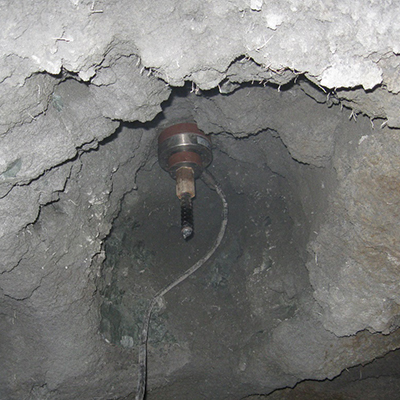
Fig 4. Anchor Load cell in the cavity in a dam.
How can choose the right Piezoelectric load cell?
Choosing the right piezoelectric load cell requires considering several important factors that align with the requirements of your specific application. Here are the key factors to consider:
- Load Capacity: Determine the maximum and minimum loads your application requires to ensure the piezoelectric load cell can handle the anticipated range. Choose a load cell with a capacity that aligns with your specific load requirements.
- Sensitivity: Evaluate the sensitivity of the piezoelectric load cell, which refers to its ability to detect small changes in load. Piezoelectric load cells are known for their high sensitivity, allowing for precise measurements. Consider the sensitivity range needed for your application.
- Frequency Response: Piezoelectric load cells exhibit excellent frequency response due to their fast response time. However, the frequency range required for your application should be considered. Some piezoelectric load cells may have specific frequency limitations or may excel in certain frequency ranges.
- Accuracy: Consider the level of accuracy needed for your application. Piezoelectric load cells can provide high accuracy, but it's important to choose one that offers the required precision for your measurements.
- Dynamic Range: Evaluate the dynamic range of the piezoelectric load cell, which refers to its ability to measure a wide range of loads accurately. Ensure that the load cell can accommodate both low and high load levels within its dynamic range.
- Environmental Conditions: Consider the operating environment in which the piezoelectric load cell will be used. Factors such as temperature, humidity, dust, and corrosive substances can impact the load cell's performance. Ensure that the load cell has suitable protection ratings (e.g., IP67) and environmental compatibility for your specific application.
- Overload Protection: Assess the piezoelectric load cell's ability to handle occasional or accidental overloads without damaging its performance. Look for load cells with built-in overload protection features or mechanisms to ensure the longevity and reliability of the load cell.
- Mounting and Installation: Evaluate the mounting options and installation requirements of the piezoelectric load cell. Consider the available space and the load cell's compatibility with your application's mounting configuration.
- Output Signal: Determine the type of output signal required from the piezoelectric load cell. Piezoelectric load cells typically generate voltage signals. Consider if a direct voltage output or an amplified output is needed, and ensure compatibility with your measurement system or data acquisition equipment.
- Calibration and Maintenance: Consider the ease of calibration and ongoing maintenance requirements of the piezoelectric load cell. Evaluate the load cell's stability over time and the availability of calibration services or support from the manufacturer.
- Manufacturer Reputation and Support: Consider the reputation and support provided by the piezoelectric load cell manufacturer. Assess their track record, customer reviews, warranties, technical assistance, and availability of spare parts. A reputable manufacturer ensures quality products and reliable customer support.
By considering these factors, you can select the right piezoelectric load cell that meets the load capacity, sensitivity, accuracy, environmental, and operational requirements of your application. It is also advisable to consult with load cell manufacturers or experts who can provide specific recommendations based on your application needs.
Choosing the proper Capacitive load cell
Choosing the proper capacitive load cell involves considering several important factors that align with the requirements of your specific application. Here are the key factors to consider:
- Load Capacity: Determine the maximum and minimum loads your application requires to ensure the capacitive load cell can handle the anticipated range. Choose a load cell with a capacity that aligns with your specific load requirements.
- Sensitivity: Evaluate the sensitivity of the capacitive load cell, which refers to its ability to detect small changes in load. Capacitive load cells can offer high sensitivity, allowing for precise measurements. Consider the sensitivity range needed for your application.
- Accuracy: Consider the level of accuracy needed for your application. Capacitive load cells can provide high accuracy, but it's important to choose one that offers the required precision for your measurements.
- Linearity: Evaluate the linearity of the capacitive load cell, which refers to how well it maintains a linear relationship between the applied load and output signal. Higher linearity ensures more accurate and reliable measurements.
- Temperature Range: Consider the temperature range in which the capacitive load cell will operate. Capacitive load cells may have specific temperature limitations. Ensure that the load cell is compatible with the anticipated temperature extremes to maintain accurate measurements.
- Environmental Conditions: Consider the operating environment in which the capacitive load cell will be used. Factors such as humidity, dust, and corrosive substances can impact the load cell's performance. Ensure that the load cell has suitable protection ratings (e.g., IP67) and environmental compatibility for your specific application.
- Mounting and Installation: Evaluate the mounting options and installation requirements of the capacitive load cell. Consider the available space and the load cell's compatibility with your application's mounting configuration.
- Output Signal: Determine the type of output signal required from the capacitive load cell. Capacitive load cells typically generate analog voltage or current signals. Ensure compatibility with your measurement system or data acquisition equipment.
- Electrical Noise Immunity: Capacitive load cells can be sensitive to electrical noise or interference. Look for load cells with good noise immunity features, such as shielding or filtering, to minimize the impact of external electrical noise and ensure accurate measurements.
- Calibration and Maintenance: Consider the ease of calibration and ongoing maintenance requirements of the capacitive load cell. Evaluate the load cell's stability over time and the availability of calibration services or support from the manufacturer.
- Manufacturer Reputation and Support: Consider the reputation and support provided by the capacitive load cell manufacturer. Assess their track record, customer reviews, warranties, technical assistance, and availability of spare parts. A reputable manufacturer ensures quality products and reliable customer support.
By considering these factors, you can select the proper capacitive load cell that meets the load capacity, sensitivity, accuracy, environmental, and operational requirements of your application. It is also advisable to consult with load cell manufacturers or experts who can provide specific recommendations based on your application needs.
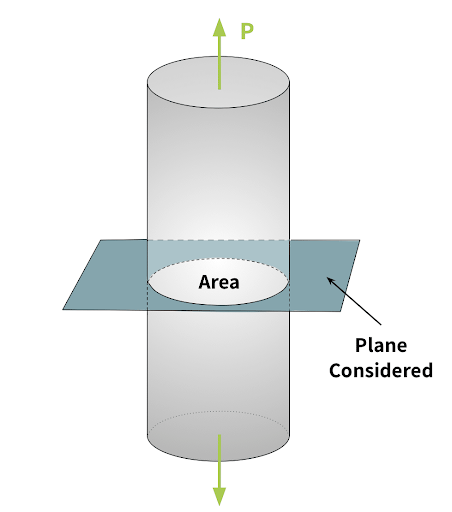
Fig 5. Tensile Normal Force
What are the mechanical factors to choose the load cell?
When choosing a load cell, several mechanical factors should be considered to ensure it is suitable for your application. Here are the key mechanical factors to consider:
- Load Capacity: Determine the maximum and minimum loads that the load cell will need to measure. Choose a load cell with a capacity that aligns with your specific load requirements. It should be capable of accurately measuring the anticipated load range without exceeding its limits or causing damage.
- Physical Size and Dimensions: Consider the available space and mounting constraints in your application. Ensure that the load cell's physical size and dimensions allow for proper installation and integration within your system.
- Mounting Options: Evaluate the mounting options available for the load cell. Different load cells may have specific mounting requirements such as threaded holes, through holes, or flanges. Choose a load cell that offers compatible mounting options for easy and secure installation.
- Construction Material: Assess the construction material of the load cell, as it impacts its durability and resistance to environmental factors. Common materials include stainless steel, alloy steel, and aluminum. Select a load cell with a construction material suitable for your application's environmental conditions and load requirements.
- Environmental Protection: Consider the environmental conditions in which the load cell will be used. Factors such as moisture, dust, chemicals, or extreme temperatures can affect the load cell's performance and longevity. Choose a load cell with appropriate protection ratings, such as IP67, to ensure reliable operation in the specific environment.
- Overload Protection: Evaluate the load cell's ability to handle occasional or accidental overloads without causing permanent damage. Look for load cells with built-in overload protection features or mechanisms that provide safeguards against excessive loads.
- Stiffness and Deflection: Consider the load cell's stiffness and deflection characteristics. A load cell with higher stiffness offers better resistance to deflection under load, ensuring accurate and repeatable measurements. Evaluate the load cell's deflection under load and ensure it meets your application's requirements.
- Fatigue Life: Assess the load cell's fatigue life, which indicates its ability to withstand repeated loading cycles over time. Consider the expected load cycles in your application and select a load cell with a sufficient fatigue life to ensure long-term reliability.
- Sealing and Protection: Evaluate the load cell's sealing and protection against moisture, dust, and other contaminants. Ensure that it is designed with adequate sealing to prevent ingress and maintain accurate measurements.
- Calibration and Maintenance: Consider the load cell's calibration requirements and ease of maintenance. Evaluate factors such as stability over time, the availability of calibration services, and the manufacturer's recommendations for maintenance intervals.
- Manufacturer Reputation and Support: Consider the reputation and support provided by the load cell manufacturer. Assess their track record, customer reviews, warranties, technical assistance, and availability of spare parts. A reputable manufacturer ensures quality products and reliable customer support.
By considering these mechanical factors, you can select a load cell that meets the load capacity, physical requirements, environmental conditions, and durability requirements of your specific application. It is recommended to consult with load cell manufacturers or experts for further guidance based on your application's unique needs.
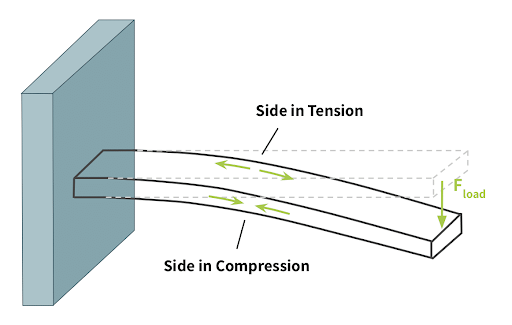
Fig 6. Bending and Tensile Force
What are the electrical factors to choose the load cell?
When choosing a load cell, several electrical factors should be considered to ensure compatibility and optimal performance within your application. Here are the key electrical factors to consider:
- Excitation Voltage: Determine the excitation voltage required by the load cell. Load cells typically operate on low-voltage DC excitation, commonly 5V or 10V. Ensure that your measurement system or data acquisition equipment can provide the required excitation voltage.
- Output Signal: Understand the type of output signal generated by the load cell. Common output signals include analog voltage (mV/V), analog current (4-20mA), or digital signals (such as CANbus or Ethernet). Choose a load cell with an output signal that is compatible with your measurement system or data acquisition equipment.
- Output Sensitivity: Consider the output sensitivity of the load cell, which indicates the change in output signal for a given change in applied load. It is typically specified in mV/V. Higher sensitivity allows for more precise measurements. Select a load cell with an output sensitivity suitable for your application's measurement requirements.
- Noise Immunity: Evaluate the load cell's immunity to electrical noise or interference. Electrical noise can affect the accuracy and stability of the output signal. Look for load cells with good noise rejection capabilities or built-in shielding to minimize the impact of external electrical noise.
- Output Impedance: Consider the output impedance of the load cell. It affects the signal integrity and can impact the distance over which the signal can be transmitted without significant signal loss. Ensure that the load cell's output impedance matches the input impedance of your measurement system or consider using appropriate signal conditioning equipment.
- Filtering and Amplification: Depending on your application's requirements, you may need to apply additional filtering or amplification to the load cell's output signal. Evaluate whether the load cell provides the necessary flexibility for signal conditioning or if additional external devices are required.
- Calibration and Linearity: Assess the load cell's calibration and linearity specifications. Calibration ensures the accuracy of the load cell's output signal. Linearity refers to how well the load cell maintains a linear relationship between the applied load and output signal. Choose a load cell with a reliable calibration process and good linearity performance.
- Data Acquisition Compatibility: Consider the compatibility of the load cell with your data acquisition system or software. Ensure that the load cell's output signal can be easily integrated into your data acquisition setup for measurement, recording, and analysis.
- Electrical Connection: Evaluate the electrical connection options provided by the load cell. Common connection types include cables with soldered leads or connectors. Ensure that the load cell's electrical connections are compatible with your system's wiring or connector requirements.
- Power Supply: Consider any specific power supply requirements of the load cell, such as voltage or current requirements. Ensure that your system can provide the necessary power supply to operate the load cell effectively.
- Manufacturer Reputation and Support: Consider the reputation and support provided by the load cell manufacturer. Assess their track record, customer reviews, warranties, technical assistance, and availability of spare parts. A reputable manufacturer ensures quality products and reliable customer support.
By considering these electrical factors, you can choose a load cell that is compatible with your measurement system, provides the desired output signal, and meets the electrical requirements of your specific application. It is advisable to consult with load cell manufacturers or experts for further guidance based on your application's unique needs.
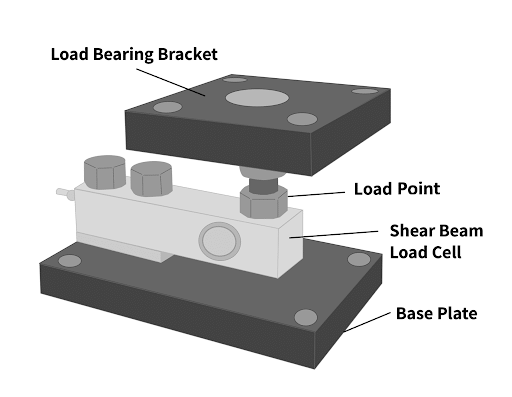
Fig 7. Single-Ended Shear Beam Application
What are the environmental factors that affect choosing the load cell
Several environmental factors can significantly impact the selection of a load cell. It is essential to consider these factors to ensure the load cell operates reliably and accurately in the intended environment. Here are some key environmental factors to consider:
- Temperature: Evaluate the temperature range in which the load cell will operate. Extreme temperatures can affect the performance and accuracy of the load cell. Choose a load cell that can withstand the anticipated temperature variations and ensure its sensitivity and calibration are suitable for the specified temperature range.
- Humidity: Consider the humidity levels in the environment where the load cell will be used. High humidity can lead to condensation, which may affect the load cell's performance or cause corrosion. Select a load cell with suitable sealing or protective measures to prevent moisture ingress and ensure long-term reliability.
- Dust and Contaminants: Assess the presence of dust, dirt, or other contaminants in the environment. These particles can interfere with the load cell's operation or cause damage. Choose a load cell with appropriate sealing or protective measures to prevent the ingress of contaminants and ensure reliable performance.
- Vibration and Shock: Determine if the load cell will be exposed to vibrations or shocks. Vibrations and shocks can affect the load cell's accuracy and reliability. Look for load cells designed to withstand vibrations and shocks, or consider using additional measures such as vibration isolation mounts or shock-absorbing mechanisms.
- Corrosive Substances: If the load cell will be exposed to corrosive substances such as chemicals or saltwater, select a load cell made from corrosion-resistant materials such as stainless steel or alloys. Ensure the load cell is designed to withstand the specific corrosive elements present in the environment.
- EMI/RFI Interference: Evaluate the presence of electromagnetic interference (EMI) or radio frequency interference (RFI) in the environment. EMI/RFI can disrupt the load cell's electrical signals and affect its accuracy. Look for load cells with good noise immunity or shielding to minimize the impact of external electrical interference.
- Outdoor vs. Indoor Use: Consider whether the load cell will be used indoors or exposed to outdoor elements. Outdoor environments typically present more challenging conditions, including temperature variations, humidity, and exposure to weather elements. Ensure the load cell is designed for the intended use, with suitable protection against environmental factors.
- Cleanroom Requirements: In cleanroom environments where strict cleanliness and particle control are essential, choose load cells that meet the required cleanliness standards. These load cells should have minimal particle generation and be compatible with cleanroom protocols.
By considering these environmental factors, you can select a load cell that is suitable for the specific conditions in which it will be used. It is important to consult with load cell manufacturers or experts who can provide guidance on selecting load cells with the appropriate environmental ratings and protection to ensure reliable and accurate performance in your specific application.
Conclusion
In conclusion, choosing the right load cell requires careful consideration of various factors, including mechanical, electrical, and environmental aspects. By taking into account the load capacity, physical size, mounting options, construction material, excitation voltage, output signal, noise immunity, and calibration requirements, among others, you can ensure that the selected load cell meets the specific needs of your application.
The electrical factors play a crucial role in determining the compatibility, accuracy, and reliability of the load cell. Evaluating the excitation voltage, output sensitivity, noise immunity, calibration, and data acquisition compatibility ensures seamless integration with your measurement system and accurate data acquisition. Additionally, considering the reputation and support provided by the load cell manufacturer helps ensure the quality and reliability of the chosen load cell.
By thoroughly understanding and addressing the mechanical and electrical considerations, you can make an informed decision that aligns with your application requirements. Whether it's for industrial, research, or commercial purposes, selecting the right load cell will contribute to improved performance, precise measurements, and enhanced productivity.
References
https://tacunasystems.com/knowledge-base/choosing-the-right-load-cell-for-your-job/
https://tacunasystems.com/knowledge-base/an-overview-of-load-cells/
Recent Posts
-
From Lab to Launchpad: Pressure Sensor Industry Certifications
In the intricate world of technology and precision engineering, where every measurement matters a …16th Mar 2024 -
Stand Out, Stand Certified: The Art of Pressure Sensor Safety
Stand Out, Stand Certified: The Art of Pressure Sensor Safety Welcome to the world of performance …9th Mar 2024 -
Robotics in Food and beverage Industry
Our lives depend on the food and beverage industry and it is in a constant state of evolution, …5th Mar 2024

